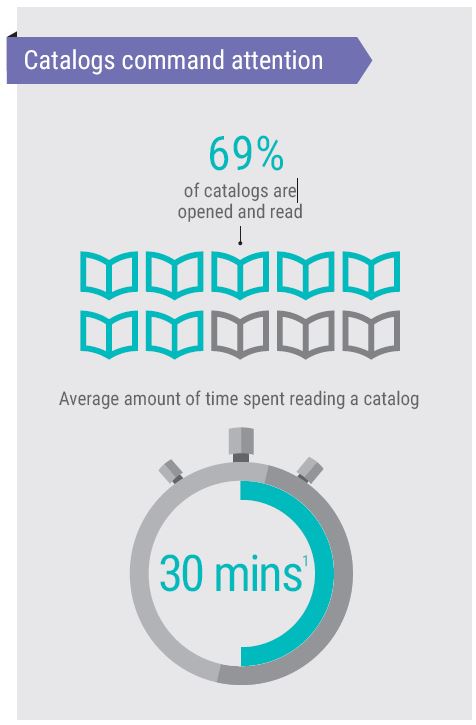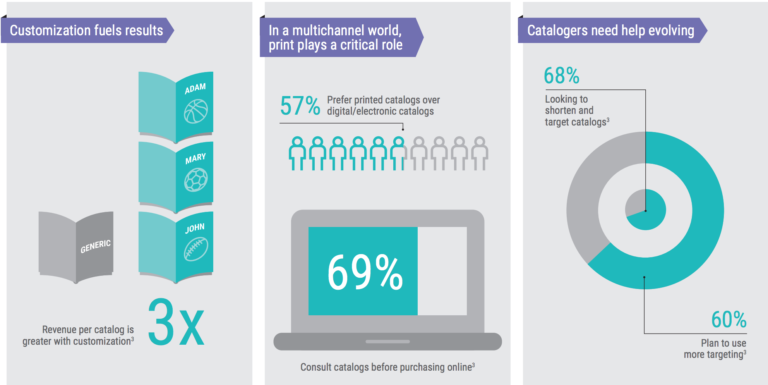
When 69 percent of your target audience engages in a particular purchase behavior, you’ll most certainly want your customer experience to enable that activity. That, in a nutshell, is what’s behind the recent resurgence in printed catalogs. A recent Xerox-InfoTrends research study found that nearly seven out of 10 consumers consult catalogs before purchases.
The same study found that transactions are three times larger when catalogs are personalized and relevant to the recipient—and as a result, 68 percent of catalogers are seeking personalization solutions.
The power of data, combined with new production capabilities associated with inkjet technology, is transforming the customer experience for retailers and opening up new areas for revenue generation.
Offset-Like Quality, Achievable with Inkjet
These technological advancements are bringing new hope to champions of personalized catalogs. Rather than sending static or versioned catalogs, the economies and capabilities enabled by inkjet printing are making it feasible for retailers to add personalization and relevancy to catalog covers, inserts and offers. Depending on mailing circulation, these can be produced either entirely on digital production devices or as hybrid solutions with digital and offset presses.
Among the new technology advancements helping enable personalized catalogs: The Xerox® TrivorTM 2400 Inkjet Press, available today, and Xerox High Fusion Inks, releasing later this year. This new ink set is notable as it delivers a wider color gamut and dramatic visual resolution that, when combined with commodity offset coated papers, puts more high-quality jobs within the reach of inkjet production. It’s important to note that these inks help achieve brilliant, offset-like image quality without pre- or post-coating processes or specialty heads.
Real Personalized Catalogs, in Action
One of the original pioneers of the personalized catalog is bonprix, a Germany-based international retailer with more than 32 million customers in 29 countries. While the retailer employs a multichannel approach that spans online, print and retail, it is their printed catalog that represents their most critical channel – 220 million copies are distributed annually with 69% of online shoppers consulting the catalog first.
Bonprix began personalizing its catalogs after running a test campaign comparing a traditional static catalog with one that was personalized to present relevant offers based upon the recipient’s purchase history. Key results included 500% higher response rates from current customers and 400% higher response rates from inactive customers.
Brand Marketers, Cataloguers and Printers Come Together
Many print providers are interested in bringing these opportunities to catalogers. At Hunkeler Innovationdays in Luzerne, Switzerland, Xerox will be holding a two-day event where marketers and print providers will gather to explore the potential of personalized catalogs. Speakers will include leading retail executives speaking on the power of personalization and importance of the catalog in their marketing efforts, 1:1 visionaries will share customer success stories and attendees will hear first-hand the results of a just completed proof of concept for a major retailer in France.
 You can learn more about using personalization to make catalogs more relevant to recipients by watching this video on the Xerox personalized catalog solution or by clicking here.
You can learn more about using personalization to make catalogs more relevant to recipients by watching this video on the Xerox personalized catalog solution or by clicking here.
Interested in participating in the personalized catalog opportunity? Connect with me on LinkedIn and I’d be happy to discuss.



